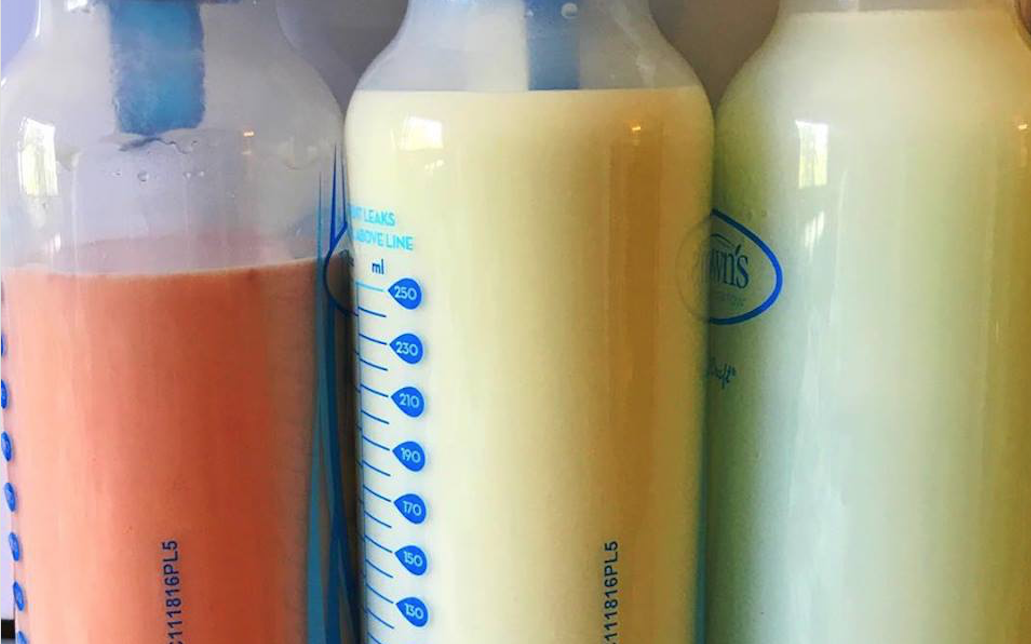
If you're a breastfeeding moms, you often don't see exactly how much your little ones are drinking. You also don't typically see what it is exactly that baby is drinking during these nursing sessions which is why moms are sometimes surprised by what they see when she pumps. That's because this liquid gold can change hues — without mom ever feeling the difference — and mom might be unknowingly giving baby something that's far from the creamy white she assumed she was producing. Nothing captures this better than Elisabeth Anderson-Sierra's viral photo of her red, white, and blue breast milk that she recently pumped.
Despite the drastic difference, this milk didn't come from different moms or different times. "It was pumped all in one session, from one breast only," Elisabeth, who is a pumping advocate and mom of two, tells CafeMom.
Despite the jarring difference in appearance, she explained that breast milk can have a broad color span of most differences that moms come across are completely normal. "Foremilk can have a blue tint to it as it is lacking in the heavier fat content of hindmilk," she wrote on her Faceboook page, One Ounce At A Time."Foods with dyes like Gatorade or colored frosting you may see the dyes affecting the color of your milk."

The red tint comes from blood in the milk and Elisabeth doesn't want moms to panic if they see something like it. In her case, the bloody milk was from a clogged duct that broke blood vessels as it cleared. "You may also see blood in your milk if you have nipple damage, bruised breast tissue, or one of your blood vessel walls just weakened and gave out," she wrote. "Don’t panic if you see blood in your milk! I know it is alarming."
According to the international breastfeeding organization La Leche League, it's generally safe to give your baby breast milk that has blood in it. If you notice a pink tint to your milk, Elisabeth recommends that you first access what is causing it before getting upset.
"If it is nipple damage seek treatment options. If it’s within the breast tissue use gentle massage and cold or warm compress depending on if you need to reduce swelling or get milk to release from ducts. Keep you milk ducts clear and empty!" she wrote. "Blood can coagulate and cause additional clogs leading to more serious problems."
Elisabeth aptly refers to this type of milk as "strawberry milk" and also reassures moms that despite the jarring shade, you don't have to dump it if you don't want to. "You can remove some of the blood if you leave the milk to settle in the fridge. Blood will sink to the bottom and you can poor off the milk into another container," she wrote. "You can also mix strawberry milk with non strawberry milk to dilute further if you are still feeling uncomfortable. Breastmilk is truly liquid gold and we work hard for it. A labor of love, blood, sweat, and tears."




